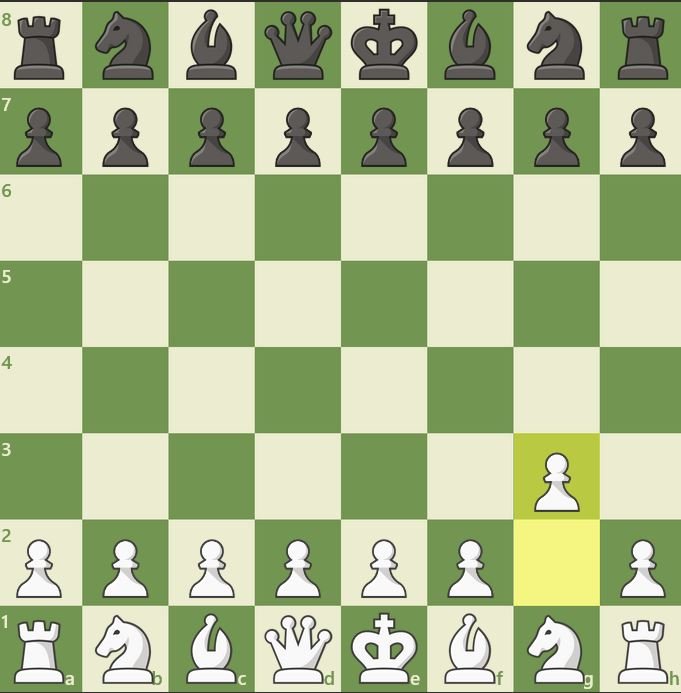1.g3 is known as the King’s Fianchetto Opening, a flexible and less direct way to begin the game that emphasizes control of the center from a distance and long-term piece development.
♟️ Key Ideas Behind 1.g3 – King’s Fianchetto Opening:
- Prepares to fianchetto the king’s bishop with Bg2, where it exerts long-term pressure on the central and queenside dark squares (especially the d5 square).
- It’s hypermodern in nature: rather than occupying the center with pawns immediately, it seeks to control it with pieces.
- White keeps the pawn structure flexible for future d3, e4, or even c4/d4 breaks.
- Often used as a universal system that can transpose into:
- King’s Indian Attack (KIA)
- Réti Opening
- English Opening
- Or remain independent with a solid kingside setup
♜ Common Setups from 1.g3:
1.g3, 2.Bg2, 3.Nf3, 4.O-O
- Basic king-side fianchetto and castling.
- Can then choose a central plan: c4, d3/e4, or even b3 + Bb2.
Example Ideas:
- Against 1…d5: White might play 1.g3 d5 2.Bg2 Nf6 3.Nf3 g6 4.O-O Bg7 5.d3 O-O 6.Nbd2 c5 7.e4, entering a reversed King’s Indian setup.
- Against 1…e5: It can lead into a reversed Modern Defense or a King’s Indian Attack setup.
♞ Transpositional Power:
- 1.g3 is often just a gateway to a larger system, making it highly transpositional.
- Can transpose to the English Opening after c4, or to the KIA after d3, Nf3, e4.
✅ Pros:
- Solid and hard to break.
- Great for players who want to avoid mainstream theory.
- Can lead to both positional and tactical middlegames depending on how you proceed.
❌ Cons:
- Can concede space early.
- If mishandled, may give Black too much central control.
